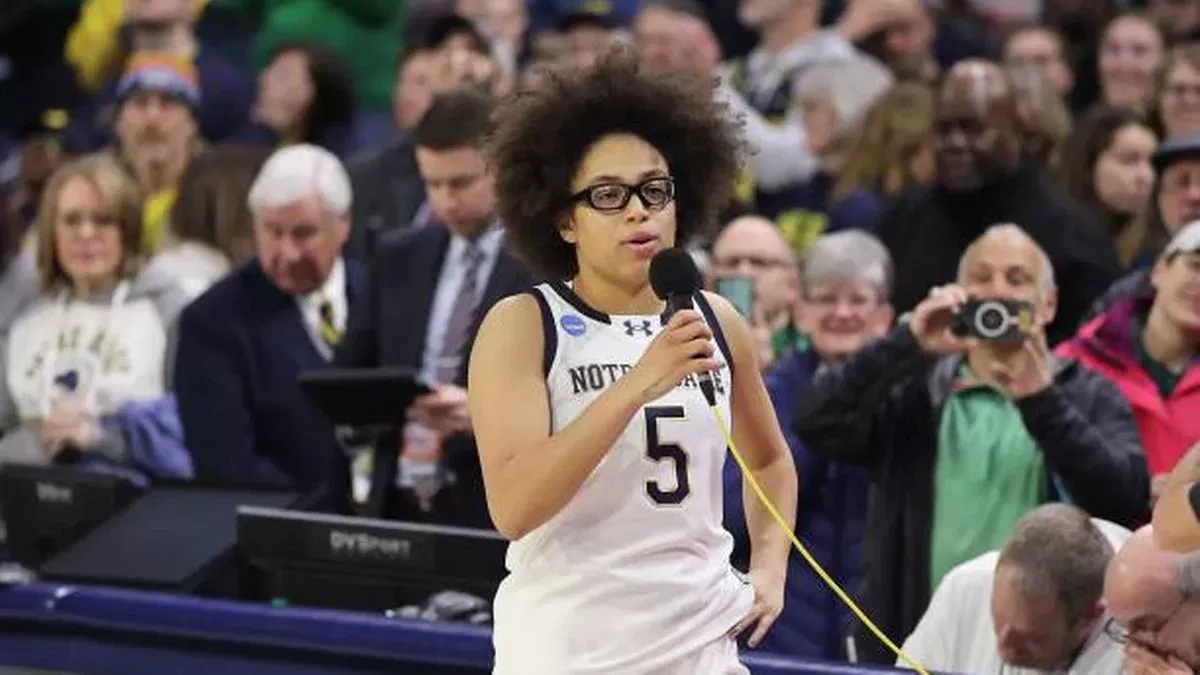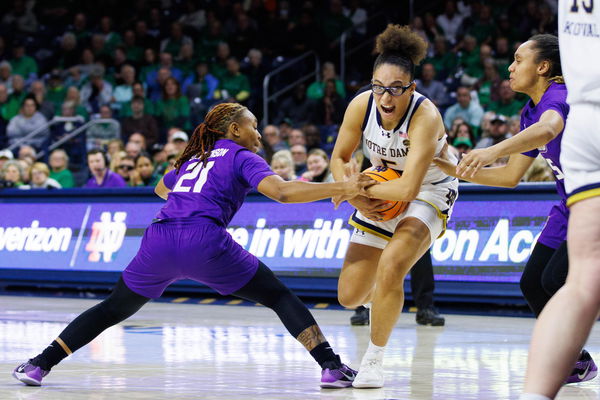

“Coach Mark Campbell is one of the greatest in the game,” Olivia Miles said on TNT’s Inside the NBA. “He has a very direct plan for me and for our team.” Hailey Van Lith placed a similar faith in Coach Campbell last season, sparking a revival in her college career. Hailey is now heading to the WNBA. However, as the projected No. 2 overall pick in the draft, Olivia Miles’ career needed anything but a revival. She would likely have been selected by the Seattle Storm, a franchise with four WNBA championships, where she could follow in the footsteps of Sue Bird. Unsurprisingly, Olivia decided to pave her own path. “I just want to be a pro without being a pro,” Miles told TNT. “Every day on campus, I want to act and be the way a pro would be.” This is a possibility for star college athletes in the NIL era, as they no longer have to worry about paychecks while focusing on their development as players and completing their college education. But did you know that it was the modification to the transfer portal that led to the rise of an ‘unrestricted free agency’?
In 2021, The NCAA amended its rules to allow players to transfer once without facing penalties, but the judgment that led to ‘unrestricted free agency’ in the league came in 2023. This was when a federal court decision prompted the NCAA to allow players to transfer as many times as they wanted. This was also when the NIL era began to bloom with players now prioritizing getting paid, leading to a frenzy that opened up an avenue of opportunities that has brought about a dramatic transfer season.
Talia Goodman of On3 Sports reports that more than 1,300 women’s basketball players have now entered the transfer portal. That’s more than 25% of all players in college basketball leading to chaos in the portal. In each of the last two off-seasons, more than 1,000 women’s college basketball players have entered the transfer portal. If you look across the landscape now — even including Final Four favorites — very few rosters haven’t been heavily affected by the portal, with players coming or leaving. For the players, it makes perfect sense as they can get rewarded for their performances of the past season while those who are unsatisfied with their minutes at a powerhouse program can take their talents to a smaller school. Olivia’s commitment, though, sent shockwaves across women’s basketball, drawing light to the exoduses that have now become a feature of every summer.
ADVERTISEMENT
Article continues below this ad
More than 1,300 women’s basketball players have now entered the transfer portal.
That’s more than 25% of all players in college basketball. https://t.co/U8RTuAx5ii
— Talia Goodman (@TaliaGoodmanWBB) April 9, 2025
Olivia Miles, Florida State’s Ta’Niya Latson, and Ohio State’s Cotie McMahon, who appeared set to lead their teams to glory, announced they will be entering the transfer portal. A decision that surely stung the fanbase, it raised concerns over the lack of security teams would face every off-season. The focus can’t just be on bringing fresh talent but also retaining those who have developed in the program. While the powerhouse basketball programs would continue to attract big names, bearing the brunt would be the smaller schools that would also risk losing homegrown talents. On the other hand, though, it provides the late bloomers an opportunity to showcase their skills on a bigger stage and bear fruits through the NIL.
ADVERTISEMENT
Article continues below this ad
Top Stories
Is the transfer portal sustainable?
As Olivia moved away from Notre Dame, it caused others to jump ship as well, making the upcoming transfer portal crucial to the Fighting Irish’s fortune. Graduate senior center Kylee Watson, junior guard Emma Risch, and former five-star freshman Kate Koval decided to enter the transfer portal alongside Miles. In fact, Koval landed in the laps of Kim Mulkey and the LSU Tigers a day before Miles announced her commitment to the Horned Frogs. A similar story unfolded at Drake when eleven of their players entered the transfer portal after their coach Darian Devries was hired by West Virginia. And while the Bulldogs faithful cursed the portal, the same mechanism that led to the decimation of the Drake program almost immediately delivered a whole new roster, led by Coach Ben McCollum’s four D-II transfers and two other key additions.
That off-season at Drake provided valuable lessons to college basketball programs across the nation. The transfer portal which was earlier perceived as a tool for programs with deep pockets could also be used to discover unexplored talents. However, the smaller athletic programs don’t have the resources to facilitate big NIL deals and keep their best players from entering the portal, while the bigger fish have the potential to offer them six-figure deals. The level of basketball is surely on the rise, but what is the cost it entails?

Imago
Notre Dame guard Olivia Miles (5) drives the ball into the paint during a NCAA women’s basketball game against James Madison at Purcell Pavilion on Tuesday, Nov. 13, 2024, in South Bend.
The uncertainty around the players’ college careers makes for an anxious experience for the coaches. An ‘unrestricted free agency’ where programs have no say in retaining pieces that have developed in their program could be a bit excessive. The players’ freedom should not be coming at the total expense of the programs, with them being able to enjoy leverage over players they have developed, adopting a model similar to the NBA where trades could be negotiated between colleges. This might ensure stability in college basketball, avoiding a descent into chaos. While a trade mechanism in the NCAA would sound unreal in the last decade, it doesn’t appear too far anymore. With a fourth of the players having already entered the portal, the 2026 NCAA Tournament could be decided in the summer, as the transfer portal has the potential to flip fortunes.
ADVERTISEMENT
Article continues below this ad
ADVERTISEMENT
ADVERTISEMENT
ADVERTISEMENT
ADVERTISEMENT

